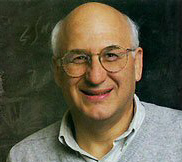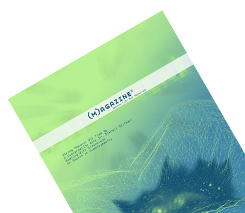Essay: Mikhail Shifman
Visualizing physics
 |
| Photo courtesy of Mikhail Shifman |
The young people who will build our future appear to be largely unaware of how attractive and rewarding careers in science can be. We should not be surprised. In many high schools, physics is an elective subject lasting just a year, not nearly enough time to ignite curiosity in hungry minds.
For comparison, the Russian school curriculum makes physics mandatory from the fifth grade to the tenth. Thus, we should also not be surprised that the majority of graduate physics students in US universities are foreigners.
In this environment, popular books, magazines, and TV shows about physics must play a special role: elements of entertainment and education should go hand in hand. Science writers carry a mission of transmitting the appeal of physics to the general public, especially young people. The ability to envision physical concepts is critical to effective communication.
On April 5, 2005, I received a message from Leigh Simmons, a student at Minneapolis College of Art and Design. She wrote that she was part of a team in a Visualizing Physics class, developing a magazine on modern high-energy physics targeting the general public and high-school students in Minnesota. She asked whether I would agree to discuss the scientific aspect of their project with her team.
She wrote: "At the very least, we want to encourage students to be open-minded about modern theory, such as supersymmetry and strings, and future developments in physics."
This message resonated with my persistent thoughts and concerns. My first encounter with Courtney Davis, Jesse Gadola, Leigh Simmons, and Katy Smith, which took place a few days later, showed that these charming students with vivid imaginations did their homework more thoroughly than I had expected. They went through Brian Greene's The Elegant Universe with pencil in hand; carefully read Patricia Schwarz's "Official string theory web site;" and compiled a large list of relevant questions that I was supposed to answer. Immediately, I understood that working with them would be fun.
During the next year, we had regular sessions, about once a month. My task was telling them about the finest aspects of modern high-energy physics in the way I thought they could understand. I recommended some additional literature. Their task was bringing me successive versions of stories and essays they produced, so I could look through them and tell them what needs to be done next. En route they did lots of graphic work creating illustrations based on ideas discussed during the sessions.
What was the result? (m)agazine: (Genius I.Q. Not Required), a publication about modern physics for the general public, is available at http://students.mcad.edu/~lsimmons/m/magazine3.pdf.
Courtney, Jesse, Leigh, and Katy invested their hearts and minds in every word and every illustration. (m)agazine contains a wealth of funny articles, such as "Dealing with Dimensions:" "Supersymmetry," and "String Landscape;" humorous fiction about Lenny Susskind, string theory's advocate; a gallery, "Faces of the String Theory," with imaginative comments; two incredible quizzes and lots of captivating pictures. It is hard to be impartial, for someone as deeply involved as I. Therefore, in search of an unbiased judgment, I gave it to a young string theorist, a graduate student couple, and a 15-year-old neighbor of mine, and asked for their reactions.
 |
They all were fascinated. An example of their comments: "The girls did a great job, at a solid professional level." My neighbor, a curious boy, said: "I knew nothing about physics and thought it was boring. After (m)agazine I changed my mind and will probably take physics in high school." His interest was the best reward I could have expected.
(m)agazine is the culmination of one inspiring story, and the beginning of another. More such innovative publications could have a chance to produce a cumulative impact on the general public, and on the imaginations of young people.
Mikhail A. Shifman is the Ida Cohen Fine professor of physics at the William I. Fine Theoretical Physics Institute of the University of Minnesota.
Click here to download the pdf version of this article.


